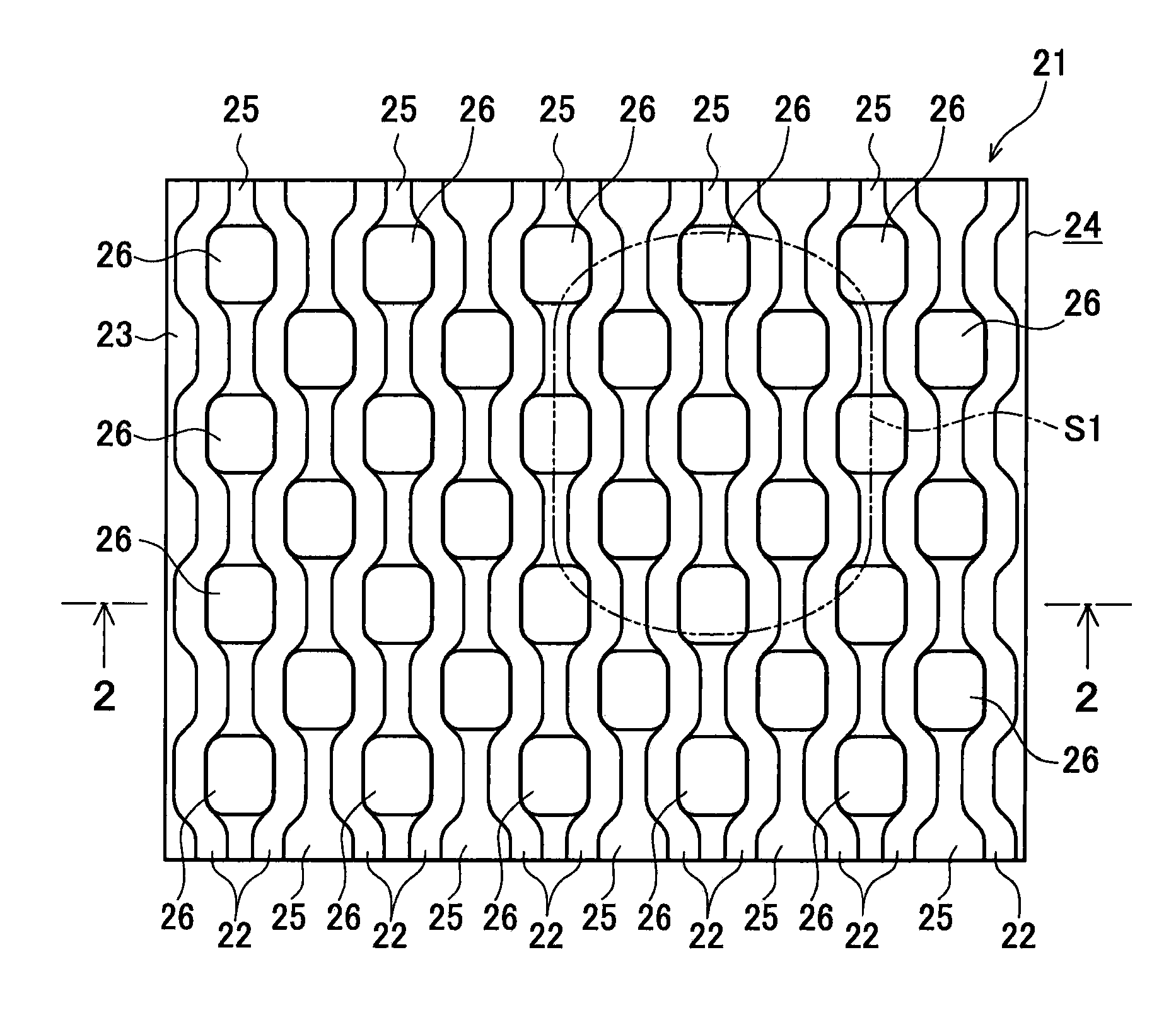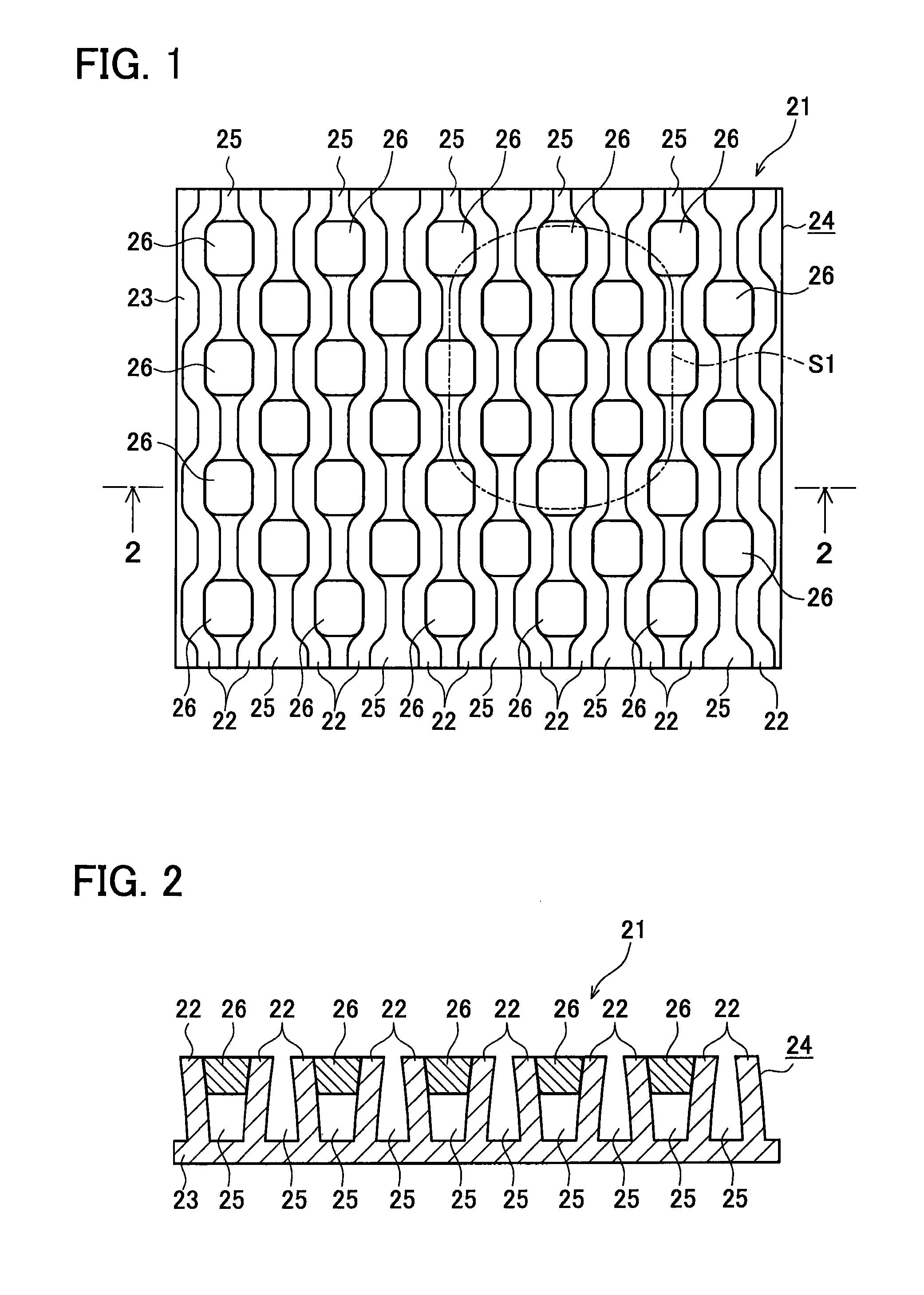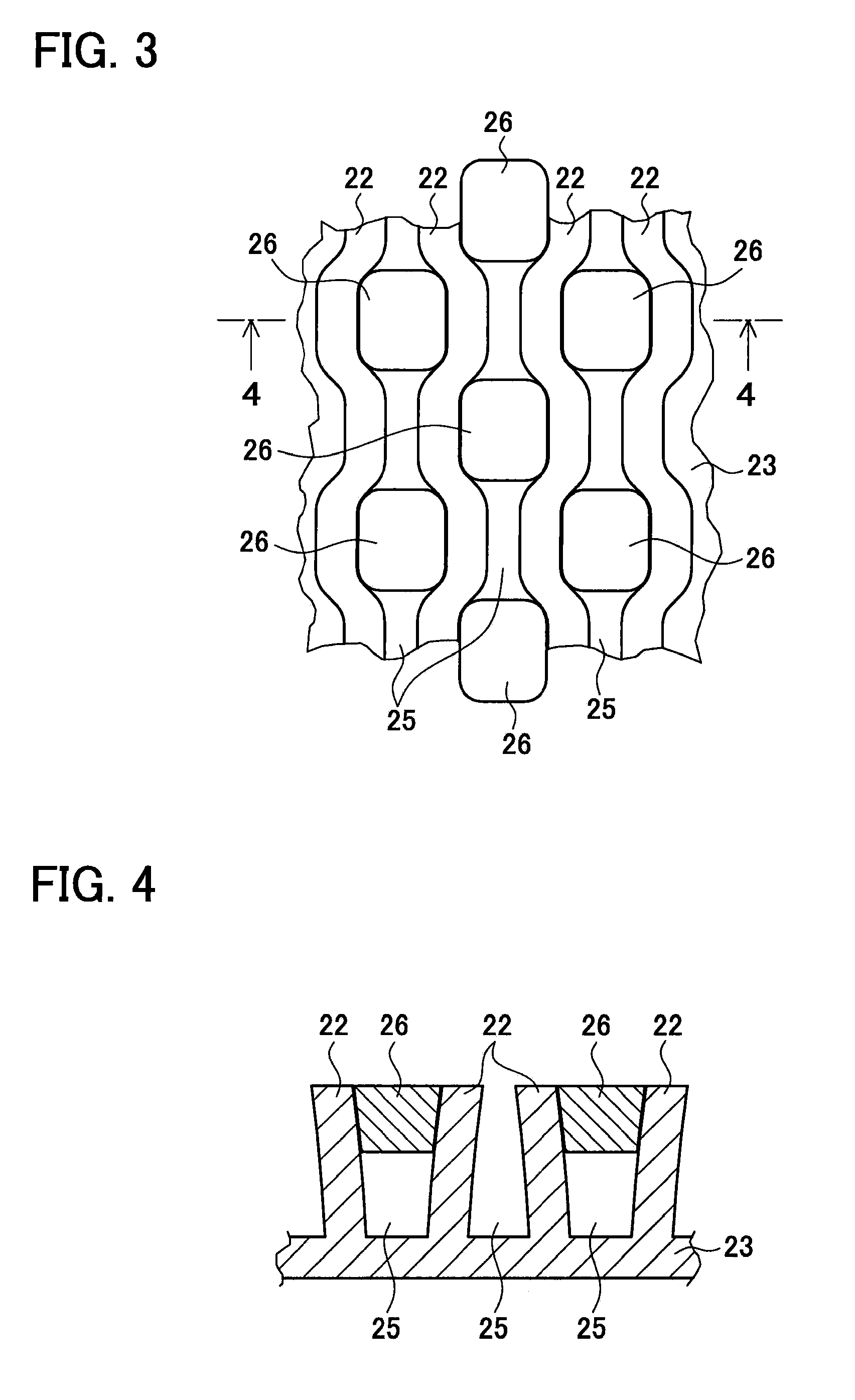Heat exchanger and method of manufacturing the same
a technology of heat exchanger and heat exchanger, which is applied in the direction of lighting and heating apparatus, semiconductor/solid-state device details, laminated elements, etc., to achieve the effects of increasing heat, increasing rigidity and strength in the structure, and increasing cooling performan
- Summary
- Abstract
- Description
- Claims
- Application Information
AI Technical Summary
Benefits of technology
Problems solved by technology
Method used
Image
Examples
first embodiment
[0047]A detailed description of a first preferred embodiment of the present invention, embodying a heat exchanger and a manufacturing method thereof, will now be given referring to the accompanying drawings.
[0048]FIG. 1 is a plan view of a heat exchanger 21 in this embodiment. FIG. 2 is a cross-sectional view of the heat exchanger 21 taken along a line 2-2 in FIG. 1. FIG. 3 is an enlarged plan view showing only a part of the heat exchanger 21 circled by an elliptic chain line S1 in FIG. 1. FIG. 4 is a cross-sectional view of the heat exchanger 21 taken along a line 4-4 in FIG. 3.
[0049]As shown in FIGS. 1 to 4, this heat exchanger 21 includes a cooling fin 24 made of aluminum or aluminium consisting of a plurality of fin portions 22 and a base portion 23 supporting the fin portions 22. In this heat exchanger 21, the fin portions 22 are formed in straight parallel shapes, and a plurality of pins 26 each having a wider width than spaces 25 each formed between the fin portions 22 are pr...
second embodiment
[0063]A second embodiment of a heat exchanger and a manufacturing method thereof according to the present invention will be explained below in detail referring to accompanying drawings.
[0064]In the following explanation, similar or identical parts to those in the first embodiment are given the same reference signs and will not be explained in detail. The following explanation is therefore made with a focus on differences from the first embodiment.
[0065]FIG. 13 is a partial enlarged plan view of the heat exchanger in this embodiment, corresponding to FIG. 3. FIG. 14 is a cross-sectional view of the heat exchanger taken along a line 14-14 in FIG. 13. This embodiment differs from the first embodiment in the configuration of a plurality of pins. In this embodiment, specifically, a plurality of taper screws 27 are used as the pins. Each taper screw 27 is formed, on its top, with a cross groove 27a as shown in FIG. 13. Each taper screw 27 has a tapered outer shape as shown in FIG. 14. Tho...
PUM
| Property | Measurement | Unit |
|---|---|---|
| width | aaaaa | aaaaa |
| displacement | aaaaa | aaaaa |
| taper shape | aaaaa | aaaaa |
Abstract
Description
Claims
Application Information
 Login to View More
Login to View More - R&D
- Intellectual Property
- Life Sciences
- Materials
- Tech Scout
- Unparalleled Data Quality
- Higher Quality Content
- 60% Fewer Hallucinations
Browse by: Latest US Patents, China's latest patents, Technical Efficacy Thesaurus, Application Domain, Technology Topic, Popular Technical Reports.
© 2025 PatSnap. All rights reserved.Legal|Privacy policy|Modern Slavery Act Transparency Statement|Sitemap|About US| Contact US: help@patsnap.com



